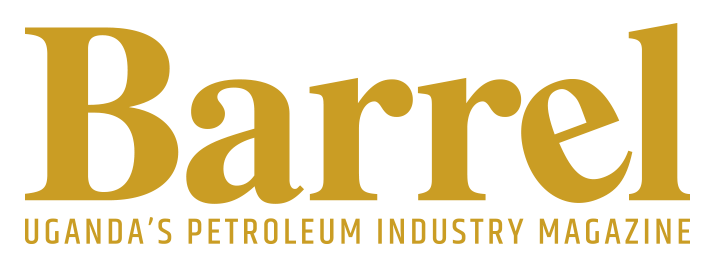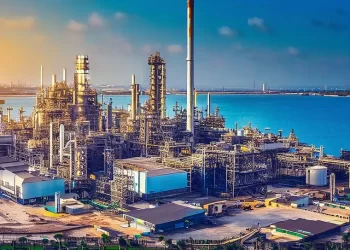The oil and gas sector has always been inherently risky. No matter how far mitigating efforts go, and by how much technology improves, it is unlikely that risk will be removed entirely from industry operations anytime soon. Any field that utilizes heavy machinery as a core component is going to have elevated risk.
Industry leaders are constantly pursuing new ways in which they can tighten up the industry’s safety standards, and one would hope that this is stemming from an altruistic standpoint. If not that, however, then hopefully this is purely from a fear of consequent litigation and potential financial repercussions that follow on-site accidents, fatal or otherwise.
Uganda has old but straightforward legislation on safety and health. The origin of this legislation is the British law when Uganda was a British Protectorate. All the British laws were adopted with minor modifications in 1964 just after independence in 1962. Recent efforts have been made to bring the legislation into conformity with the current phenomena and concerns. The Ministry of Gender, Labour and Social Development is the governmental agency with the mandate to promote dialogue and to ensure good labour administration that prevents injuries, diseases, strikes and industrial unrest. The Occupational Safety and Health Department under this ministry is mandated to evaluate and control the physical, chemical, psychological, physiological, social and technical factors that affect a person at work and the working environment. Some of the activities of this department include the following:
- Inspecting Workplaces;
- Identifying and recommending remedial measures of Work place hazards (Dangerous machinery, plants, equipment, and work practices);
- Certifying Statutory Equipment (Pressure vessels, lifting machinery and equipment);
- Projects’ Environment Impact Assessment reviewing for Safety and Health Standard compliance; and
- Investigation of Accidents, occupational diseases and dangerous occurrences at workplaces.
Aspiring for greater standards of safety does not just benefit the workers, however. Fewer accidents invariably result in fewer environmental accidents as well. The oil industry, traditionally perceived as being one of the sectors preventing environmental progress most, is desperately trying to become more environmentally sustainable where it is able, and a reduction in accidents certainly helps in that regard.
What Exactly Are the Risks within the Industry?
It is first worth examining in further detail some of the more common hazards and risks associated with the industry. When asked about the practice, most people will say with confidence that oil drilling is dangerous. When probed further, however, relatively few people seem to know about the specific hazard of the industry, themselves. Never has health and safety been less of a box-ticking exercise for an industry than it has for the oil sector, where failures can have the ultimate of consequences.
The most common form of accidents that occur on-site (both onshore and offshore) include:
Caught-in accidents. These hazards are, as they say, “on the tin.” They occur when someone becomes caught between or pinned by moving parts from which they cannot easily extricate themselves. One of the most common examples of caught-in hazards is a driller’s clothing becoming caught in revolving/rotating parts such as a rig’s drive shaft.
Vehicle collisions. Collisions between vehicles present the industry’s deadliest hazard, when examined statistically. Yet, in many ways, it is a hazard that still does not garner the recognition or attention it requires (though this is changing as we shall see later on). Fatigue and poor pre-planning are among the leading causes of these on-road accidents.
Explosions/fires. Flammable gases and chemicals are handled and dealt with every day on an oil site. These volatile compounds present a huge fire risk. Even the slightest of leakages, for example, have potentially catastrophic ramifications.
A case in point is the Piper Alpha disaster in 1988 in which 167 men tragically perished in the UK. Since then, more proactive legislation has meant that fire and explosion incidents have indeed decreased. However, that is not to say that they do not still present a very real industry threat which needs continue work.
Falls. The drilling industry often requires that workers access machinery and platforms high off the ground, placing them at increased danger of a fall. The industry has long since improved its guidelines surrounding falls, and thankfully falls account for relatively few industry accidents, today.
Indirect hazards (job-related health problems, both physical and mental). We sometimes forget, when thinking about potential signs of danger, to look beyond the primary hazards or risks themselves. Just as dangerous to industry workers is the risk of developing physical and mental health problems due to their, by nature, intensive workplaces. Cardiac conditions and high suicide rates are emblematic of the industry.
How Workers Are Being Kept Safe, In Practice
Reducing Vehicle Collisions. More often than not, colliding vehicles accidents stem from driver fatigue. The oil industry comprises a huge number of different logistical components, of which long-distance transportation is a major one. The remote location of many drilling sites means that driving long distances is simply part and parcel of the job.
Simple though it may seem, one of the best ways in which these collisions can be mitigated is through better education and journey planning. Making your staff aware of the benefits of plentiful sleep (and, conversely, the dangers that arise from a lack of it) and planning journeys that factor in potential rest stops are crucial in reducing the number of accidents on the road.
GPS Technologies. Recently, there have been vastly increased efforts to improve on-site communication. Many companies are issuing their workers GPS technology in some form so that should an accident occur, emergency response teams will waste no trying to find the injured worker. This may only save a few minutes, but those extra seconds can often be the difference between life and death.
Drone Technology. Prevention is better than cure, as the old saying goes. The ideal solution for every oil company is to prevent accidents from occurring in the first place. Drones help offer a comprehensive bird’s eye view of a site, identifying potential hazards in real-time. For instance, drones are now being used in the inspection of pipelines, pinpointing leakages and giving oil companies a more well-informed view of the hazard at hand rather than having to send employees out to inspect a potentially risky situation.
Stress and Associated Risks. Cardiac complaints are common among those working within the oil and gas industry, and the leading cause of cardiac issues tends to be stress. Many oil companies are adopting (now much more affordable) automated external defibrillators (AEDs) in case of cardiac arrests. Indeed, it seems that this stress extends to all areas of the industry, including the office and the laboratory, and not just the oil field itself. As such, AEDs are welcome additions to any site.
Mental Health. Traditionally, when we think of the ‘health’ aspect of health and safety, our minds tend to land on the physical side of things. The importance of mental health, however, has become increasingly brought into focus in recent times, and it is particularly pertinent in such a heavily male-dominated industry like the oil sector. It would not be too much of a generalization to assert that men have found it more difficult than women, traditionally, to open up about issues pertaining to their mental health.
Long stints away from home, feelings of isolation and a heavily stressful job can all lead to poorer mental health for workers in the oil industry. It is imperative that oil companies start implementing mental health support and provisions in exactly the same way that they do physical. It is also important that companies are proactive in starting the conversation, knowing that workers may be less inclined to do so of their own volition.
AI and Robotics. One of the industry areas generating the most buzz is the field of robotics, and the potential applications that exist therein. Robots are already in development (and in use, but only on a tiny scale) that can carry out potentially hazardous maintenance work, such as the monitoring of harmful gases. The deep learning and AI systems being incorporated by large oil companies will also provide a more encompassing and holistic picture of the data that they are given. The hopeful application of this will be that potential risks are predicted much sooner than they otherwise might be.
Conclusion
The outlook, overall, is positive for the industry. According to the International Association of Oil & Gas Producers’ 2021 safety report, industry fatalities worldwide had dropped from 30 in 2017 to 20 in 2021. It is worth noting that this was also with an increase in the average number of hours worked on top of that. So long as the industry’s governing bodies continue to keep their foot on the gas, pushing for increasingly high standards, there is no reason that this figure should not continue to decrease as the years go on. It is not enough, however, for the industry to simply pursue a target of no work-related deaths, annually.
Moreover, this should be the starting point from which the frequency and severity of workplace accidents is addressed, more generally. Only then, when we begin to see sustained decreases in these areas as well as annual deaths, will we know that the industry has become one where health and safety takes precedence over profit.
As much as anything else, the key to tightening industry standards of safety is to be proactive, rather than reactive. Better equipment inspection, journey planning, communication and education are all ways in which potential hazards can be identified before they develop into tangible personal safety threats.







